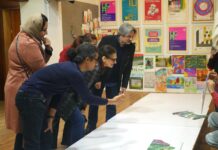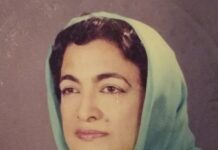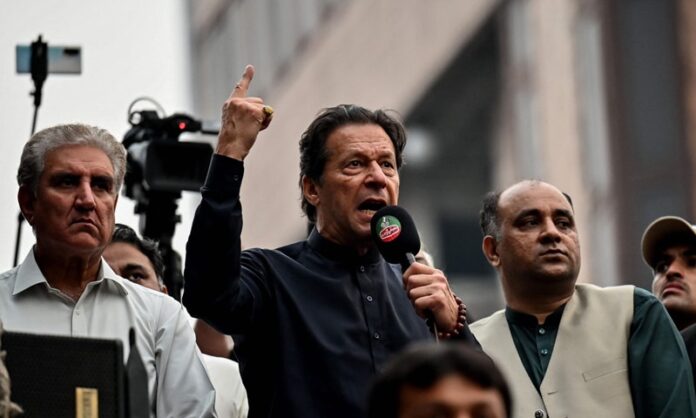AT PENPOINT
The PTI’s Long March is over, without Imran Khan having secured any of his goals. Not only did he not have any input into the appointment of the new COAS, but no fresh election date was announced. The dream might not be over, but the Long March, and the threat of a sit-in at the end, was perhaps Imran’s last card.
He announced one more card, the dissolution of the Punjab and KP Assemblies, and the resignation of the PTII members from the Sindh and Balochistan Assemblies.
He had obtained the consent for this from the CMs involved, but has still to hold the parliamentary party meeting which will take a final decision.
It would be unprecedented to have elections to two provincial assemblies, and for the federal government to remain intact, but not unthinkable. That is the logic inherent in a situation first occurring in 1988, and repeated since, of Punjab being in the opposition. It is thus not much of a jump to the stage of an election in Punjab alone.
In that context, the Indian experience will be instructive, where provincial elections for Uttar Pradesh (the largest state in the Indian Union) are now bifurcated from national elections. Now only if either UP or the Union has a premature dissolution to make the elections coincide, are elections likely to fall on the same day.
However, UP has never held the majority of the seats in India, as the Punjab does here.
Another consequence will be the continued tying of Sindh and Balochistan elections to national elections, just as in India a cluster of states have both national and provincial elections together. There were only four in 2019, which is about par for a union of 28 states and eight union territories. Three other states had elections that year, but not coinciding with the general election.
Holding separate elections for the Punjab and KP assemblies will mean entering uncharted territory, for both national and provincial candidates depend heavily on the candidates for the other seat, campaigning together most of the time, and printing joint election material.
Imran now seems to have run out of political options. He may now have to exit his agitational mode of politics for now, and for next year’s elections. It works to his advantage that next year is election year, and he can look forward to elections next year without bothering to dissolve the Punjab and KP Assemblies.
Separating the two from the national elections would lead to the electorate focusing on the provincial government’s performance, something which has not happened so far, with provincial elections being little more than referenda on the outgoing national government.
However, a separate dissolution now would become a referendum on the PTI government. As recent by-elections showed twice, once on 17 Punjab seats and then eight national and three Punjab seats, the PTI is in good electoral shape. Its voters do not seem fazed by the decision against it in the foreign funding case and against Imran in the Toshakhana reference. There is no measure of how the electorate has reacted to Mtr Khan’s having had an attempt made on him during the Long March. However, it is possible that the election will be made to centre by the PML(N) on the Buzdar and Pervez Elahi governments, for which the PTI was responsible. The issue of Buzdar’s corruption, and the role of the First |Lady and her aide Farhat Shehzadi ‘Gogi’ will also be raised. It will probably be raised in the national election, but it has a particular resonance in the Punjab.
A complicating factor in such an election would be the presence of a sitting MNA. In previous elections, those MNAs were themselves candidates, and had a vested interest in their provincial running mates doing well. Now, matters would be different, and there would be less of the coattail effect, whereby running mates delivered biradri vote banks for each other. There would be a significant time difference, and interests could change in the meanwhile. There would also be the entire internal dynamic of the PDM components. The PPP has not been entirely wiped out in Punjab, but it is close to being so. Though PPP Co-Chairman Asif Zardari has won kudos among political insiders for his skills, the Punjab electorate seems less than impressed. Then there is KP, where all components are interested in contesting.
The Sindh and Balochistan Assemblies would become targets for Imran, and bastions for the entire PDM, not just individual components. Though they do not have a majority of National Assembly seats, if they remain intact, that might prevent a national election. They will also pose a challenge to the ECP if they remain undissolved. The ECP will be hard put to monitor sitting MNAs during a provincial assembly election. True, the provincial governments will be caretakers, and the administration will be under the ECP, but will the PTI stand the Chief Election Commissioner, or indeed the rest of the Election Commission, who all signed off on the decisions against the PTI and Imran, conducting those elections?
The ECP will have a tough time keeping the federal government out of the elections. MNAs will also have to be stopped from doling out public largesse.
Apart from the possibility of violating tradition, the PDM does not seem to have an incentive to follow PTI provincial dissolutions with dissolution of its own at the centre. One of the defining characteristics of a politician is optimism, a belief, perhaps in the face of reality, that ‘something will turn up.’ If the PTI loses those elections, the coalition might feel that they might as well exploit the moment, and go for national elections. However, again, there would be a gap between national and provincial elections introduced which might not be easily overcome, as the desire for assemblies to run their full tenure becomes further confirmed.
If the PDM parties get a mauling at the hustings in provincial elections, as the PTI hopes, there will be an even lower incentive to give up their present governmental positions. Also, the possibility of the economy improving will remain, that it will be a turnaround for the general election.
The PML(N),which still remains the party to beat, especially in Punjab, will also like to bring back its chief, Nawaz Sharif, for the campaign. He might find it unfamiliar to campaign for the provincial election without a national, but he will probably also have to do some campaigning in KP.
It is also possible, indeed probable, that the PDM will move no-confidence motions in both the provincial assemblies, and thus prevent the chief ministers from dissolving. Whereas it might be possible for the Punjab government to be overturned, the KP government will likely survive, unless there is a massive intra-party rebellion. As a matter of fact, the Punjab government was only retained by the PTI after it sacrificed Usman Buzdar, and a major crisis which saw a PML(N) government briefly hold office. Indeed, Ch Pervez Elahi only became Chief Minister after the PML(Q) votes against him were excluded on a court order. In KP, on the other hand, the no-confidence motion was handily defeated.
The result of the no-confidence motion would not matter as much as its prevention of dissolution. There is an alternative, leaving the Speaker in place, and getting everyone else to resign, with the Speaker verifying the resignations to the ECP. However, while that might force dissolution in the NWP, where almost the entire House would resign, it would potentially open the door in Punjab to the PDM. Again, there would be little incentive to dissolve.
The possibility of a sit-in is now because the weather is increasingly hostile. The 2015 sit-in, it should not be forgotten, was held the summer, and was called off because of the APS Peshawar massacre, as winter set in.
Imran now seems to have run out of political options. He may now have to exit his agitational mode of politics for now, and for next year’s elections. It works to his advantage that next year is election year, and he can look forward to elections next year without bothering to dissolve the Punjab and KP Assemblies. However, his penchant for the dramatic may lead him to do so, as he has done in the past.























